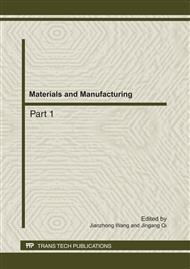p.310
p.314
p.319
p.323
p.328
p.333
p.337
p.341
p.345
Theoretical Analysis of the Influence of the Electron Pulse Modification on Al-Cu-Mn Alloy Initial Aging Stage with Valence Electron Structure
Abstract:
Statistical values of valence electron structure parameter for phase structures of super saturation solid solutions in the initial aging stage of Al-Cu-Mn alloy were calculated by using the Empirical Electronic Theory in solid and molecules (EET), then the influence of various kinds of unit cells on the aging initial stage of the Al-Cu-Mn alloy subjected to the electron pulse modification was analyzed. The results show that the a-Al-Cu-Mn phase structure unit (cell) with larger atomic distortion provides the driving force for the saturated Al-Cu-Mn alloy to form G.P quickly and results in the increase in the primary nucleus of Al-Cu-Mn alloy; thus the a-Al-Cu-Mn phase structure unit (cell) playes an important role in the improvement of alloy aging. After the application of pulsed electric field into Al-Cu-Mn alloy melt, the movement of atoms is accelerated, and the number of segregation units of Al-Cu-Mn is increased, as a result the number of the second phase is increased; generating the remarkable aging strengthening.
Info:
Periodical:
Pages:
328-332
Citation:
Online since:
July 2011
Authors:
Price:
Сopyright:
© 2011 Trans Tech Publications Ltd. All Rights Reserved
Share:
Citation:


